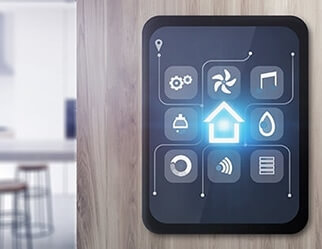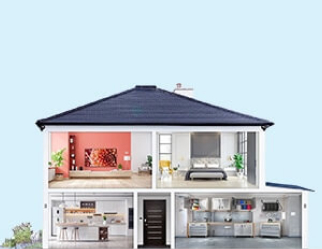Connecting Home Automation Systems
What does a home automation setup consist of?
For a connected system there would typically be a central smart hub that controls and communicates with several smart devices such as smart lights, doorbells, locks, lighting, smart security cameras and indoor and outdoor lighting.
Home automation protocol comes with many features – from controlling the temperature to alerting an alarm system. For the end user the benefits of a home automation system are comfort, security and cost saving through convenient and customer-controlled products which are easy to maintain and use daily.
The most common protocols used in smart homes are Zigbee, Z-Wave and Wi-Fi. Read on to learn about how each standard works and its benefits to keep your customers' smart homes under their control.





